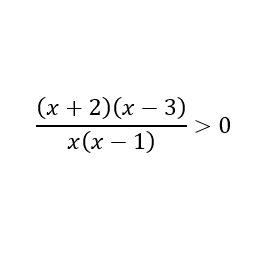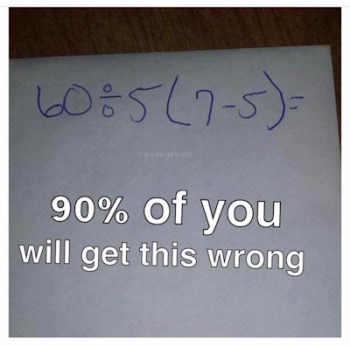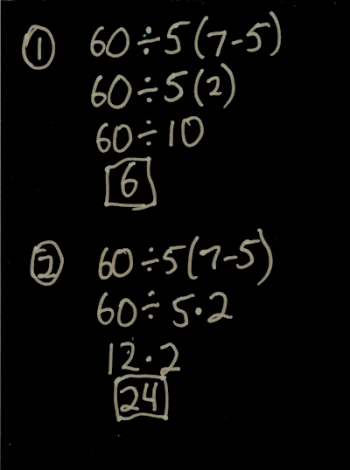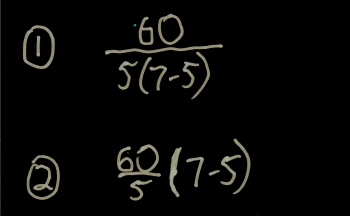Ask Professor Puzzler
Do you have a question you would like to ask Professor Puzzler? Click here to ask your question!
Twelfth grader Monesa from Pakistan writes, "A geometric sequence has first term 1/9 and common ratio 3. (i) Find the fifth term. (ii) Which is the first term of the sequence which exceeds 1000? I've found (i) as 9, but cannot do (ii) without trial and error. I think it may have something to do with logarithms, but can't think how to do it. Any help would be appreciated"
Hi Monesa, you absolutely can use logarithms to solve the second part of your question. Here's how that looks. First, we write a non-logarithmic equation just like you would for any geometric sequence problem.
1/9 = 1000.
Strictly speaking, we want the term to be greater than or equal to 1000, but for now we're going to write it as an equation; this will give us the minimum possible value of n.
Multiplying both sides of the equation by 9 gives:
3n - 1 = 9000.
Here's where logarithms come into play. If you've studied logarithms at all, you know that a log is actually just an exponent. You also have been taught that:
ab = c and loga c = b are equivalent equations. So we can take your exponential function above and rewrite it as a log equation:
log 3 9000 = n - 1
Now, your calculator probably won't calculate a log in base 3, which is what you have here. But we have a nice log property called the "Change of Base Property" - it says:
log a b= (log c b)/(log c a)
In other words, we can change the base to anything we want. What base do we want? Base ten, because our calculators will handle base ten logarithms:
log 3 9000 = (log 9000)/(log 3) = 8.29...
Wait a minute! That gives n = 9.29! That doesn't make sense; how can you have term number 9.29? The answer is, you can't. In a geometric sequence, the term number has to be an integer. But we know that it has to be at least 9.29, so the smallest integer value n could be is 10. The tenth term is larger than 1000.
Can we check that? Sure! 1/9 · 39 = 2187, and 1/9 · 38 = 729. Sure enough, the 9th term doesn't quite make it to 1000.
How do you solve an inequality which looks like the following?

So we first need to find the points at which the different factors change sign, because those are the points at which the sign of the entire expression changes. We find these points of interest by setting each factor equal to zero (after all, the point at which the factor is zero is the point at which the factor is changing sign).
x + 2 = 0
x = -2
x - 3 = 0
x = 3
x = 0
x - 1 = 0
x = 1
So our points of interest are x = -2, x = 0, x = 1, and x = 3.
I listed those in ascending order; which will make it a little easier to finish up the problem.
If x < -2, then all the factors are negative, and the result is positive.
If -2 < x < 0, then x, (x - 1) and (x - 3) are negative, giving a negative result.
If 0 < x < 1, then (x - 1) and (x - 3) are negative, giving a positive result.
If 1 < x < 3, only (x - 3) is negative, giving a negative result.
If x > 3, none of the factors are negative, and the result is positive.
Thus, the solution is x < -2 or 0 < x < 1 or x > 3
Find a, b, and c if a + b + c = 5; a2 + b2 + c2 = 29, and a3 + b3 + c3 = 83.
This is an interesting problem, and some clever manipulation may be required.
EQ 1: a + b + c = 5
EQ 2: a2 + b2 + c2 = 29
EQ 3: a3 + b3 + c3 = 83
Let's start by observing that if we square the first equation, we get:
EQ 4: a2 + b2 + c2 + 2ab + 2bc + 2ac = 25.
Subtracting (2) from (4), and simplifying, gives:
EQ 5: ab + bc + ac = -2
Now let's (3), and rewrite it with a3 + b3 factored:
EQ 6: (a + b)(a2 - ab + b2) +c3 = 83.
Ideally, it would be nice if we could rewrite (6) in terms of c. We note the following:
(1) can be rewritten as: a + b = 5 - c
(5) can be rewritten as ab = - 2 - bc - ac = -2 - c(a + b) = -2 - c(5 - c) = c2 - 5c - 2
(2) can be rewritten as a2 + b2 = 29 - c2
Substituting these into (6) gives us:
EQ 7: (5 - c)(29 - c2 - c2 + 5c + 2) + c3 = 83
We simplify this equation as follows:
(5 - c)(-2c2 + 5c + 31) + c3 = 83
2c3 - 15c2 - 6c + 155 + c3 = 83
3c3 - 15c2 - 6c + 72 = 0
c3 - 5c2 - 2c + 24 = 0
This is a cubic equation, so we naturally expect three answers. And this makes perfect sense, in light of the problem; the equations are symmetric with respect to a, b, and c, so once we find three values for c, we know that any combinations of those three values make ordered triples (a, b, c) that work.
I don't see a quick solution by grouping, so I resort to the rational root theorem until I find a value that works; then I factor the resulting quadratic to obtain -2, 3, and 4, in any order.
Thanks for the problem; that was a fun one!
Carol from South Paris asks, "After parentheses and exponents, order of operation is Multiply or Divide before Add and Subtract, then go left to right....but I'm puzzled about this one: 60 divided by symbol 5 (7 - 5). Is the answer 24 or 6? Thank you."
Hi Carol, I know exactly what you're talking about; I've been seeing this (and variations on it) cropping up on Facebook regularly in the last few days. It's funny how these things go in streaks. First it's problems about fruits and flower petals, and then people get tired of those, and it's back to order-of-operations again! Here's what the meme looks like, to help those who haven't seen it.

There are two common answers to this problem, and I show both ways of evaluating it below:

Why do people come to two different answers? And which one is correct?
There are two issues that lead to the confusion. The first is that when you first learned PEMDAS (or BODMAS, or whatever you called Order of Operations), you probably had not learned about the juxtaposition of parentheses with numbers and variables - if you saw this problem as a child, you probably saw it like this: 60 ÷ 5 x (7 - 5). That problem is entirely unambiguous. The correct order was to do the subtraction inside the parentheses first, then the division, and then the multiplication, giving you an answer of 24.
When you learned Algebra (or Pre-Algebra) you started using juxtaposition of parentheses with numbers, variables, and other parentheses to represent multiplication: 5(x + 1), x(x + 1), (x + 1)(x + 2). In each case, those can be thought of as: 5 · (x + 1), x · (x + 1), and (x + 1) · (x + 2). BUT...even though they "mean the same thing" you became trained, through usage, to treat the juxtaposed parentheses as an inviolable grouping. the 5 and the (x + 1) go together like peanut butter an jelly. This makes you, the algebra student, want to do the first evaluation method.
In PEMDAS we say that we do parentheses first. But what does that mean? Does it mean "Do what's inside the parentheses first," Or does it mean "Do what's inside and then combine the result with whatever the parentheses are juxtaposed with."? If you can't answer that question, you can't answer the meme.
What's the other issue here? The other issue is the fact that the operation symbol before the juxtaposed parentheses is a division symbol. If you stop to think about it, there wouldn't be an issue if it was multiplication, addition or subtraction. The problem would not have confused anyone if it had been 60 - 5(7 - 5) or 60 + 5(7 - 5).
This actually came up in my Algebra One class yesterday; we were discussing operation symbols, and I told them that in our algebra class, we would almost never use the division symbol used in this problem. Instead, we would use a vinculum (a horizontal fraction bar) to represent division.
Using a fraction bar removes the ambiguity from this problem, because if you use a fraction bar, you must make a choice in writing it out, as shown below.

Okay, sure; we can make it unambiguous by changing our notation. But...who is right?
That question is a little tougher. You can find respected math websites and math video bloggers who come down on either side of the issue. And everyone tends to be emphatic that their interpretation is absolutely 100% correct. But that's not the worst of it; Texas Instruments made two different calculators (TI82 and TI83) that would evaluate this differently; one would give 6 as the answer, and the other would give 24.
For this reason (and I think it's a sufficient reason) I won't come down on one side or the other. Because if I told you that the first way was right, someday you'll be using the calculator that evaluates using the second method, or vice-versa. Until all our software consistently evaluates these things the same way (or refuses to evaluate them *), it's not safe to adamantly insist on one or the other. Instead, I tell my students, "If you're doing something like this on a calculator, always put in parentheses to clarify the meaning." But the reality is, this never comes up in my math classes, because we use the vinculum instead of the division symbol. You should do the same.
* People post screenshots of their desktop calculator (Windows) evaluating this to 24, but they never stop to think that they're actually changing the symbolic representation of the problem, because the Windows calculator refuses to do juxtaposition - it requires the use of a multiplication symbol. And since this problem is really all about symbolic representation, you cheated when you did that!
Professor Puzzler's brother, who is also a math teacher, and a coach of math teachers, adds the following advice that he gives his students:
- Estimate your answer first.
- Make sure you know how your calculator works on order of operations.

Rusia, from New Zealand, asks, "What is the meaning of this phrase: Indeed, it is easier for a camel to go through the eye of a needle than for someone who is rich to enter the kingdom of God."
Hi Rusia, when I read this question, I thought, "Surely I've answered this question on the Professor Puzzler blog before?" So I went through the archives to find it, and realized that I was remembering wrong: I previously answered a question about another one of Jesus' statements involving a camel: straining at a gnat, swallowing a camel.
I mention that because it's interesting that in both cases, Jesus is making a rather absurd-sounding claim about camels. In the first, that if you're not careful, you could actually swallow a camel, and the second, that you might somehow fit a camel through a sewing needle's eye.
So, what's actually happening when Jesus makes the statement about swallowing camels? A rich man has come up to Jesus and asked him (note: you can find this entire exchange in Matthew 19:16-26. Rather than quoting the text, I'm putting it in my own words.): "What good thing should I do, if I want to get eternal life?" Jesus responds by telling him that he should keep the commandments. "Which ones?" the man replies, so Jesus gives a run-down of a partial list of the Ten Commandments, plus the additional "Love your neighbor as yourself," which is one of Jesus' favorites; he mentions in another place that this is the second most important commandment ever given.
The rich man proudly declares, "I've done all of these things since childhood!"
At this point, Jesus suggests that the man isn't as perfect as he thinks he is - Jesus says to him, "If you want to be truly perfect, go sell everything you own, give the money to the poor, and follow me." The man turns and walks away, sad, because of his great wealth.
At this point, as the man is walking away, Jesus turns to his disciples and announces, "It is easier for a camel to go through the eye of a needle than for a rich person to enter the kingdom of God." It is an absurd mental image, to suppose that a camel could fit through the eye of a needle; a camel is significantly taller than me, and the eye of a sewing needle is tiny. It's a comparison designed to sound utterly absurd and impossible.
The disciples are stunned by this, and with good reason. If you ever read through some of the Old Testament stories about the patriarchs, you find that wealth is often shown as evidence of God's favor. Abraham, Job, King David, King Solomon, and others. Jesus seems to be turning this idea on its head, by saying that wealth isn't evidence of God's favor, and in fact can be an impediment to godliness and God's favor. So the disciples, with the biblical background they have under their belts, are astonished, and demand, "Well, if the rich can't make it, who can?"
Jesus considers that they've gone from one misunderstanding to another; He never said that a rich man can't make it - only that it's difficult. So he answers, "With man this isn't possible, but God can do anything." In saying this, he highlights one of the central tenets of Christianity - that man, on his own, is incapable of being "good enough" - God's intervention is required on his behalf.
That's the story, in a nutshell, and now I'll add a few comments for clarification and additional information.
What Did the Rich Man Do?
In the story of the rich man, he is described as "going away sad, because he had a lot of money." There is some disagreement on what that statement means: some people think the man is sad because he can't bring himself to give away everything; some think he's sad because he's going to give away everything and is sad that he won't have it any more. The former is the more commonly held view.
A Jerusalem Gate?
There is a popular explanation that one of the many gates to the city of Jerusalem is actually called "The Eye of the Needle." It is a small gate - smaller than a camel. So if a merchant comes to that gate with a loaded camel, the camel has to be unburdened, and crawl through the gate on its knees. Thus, the gate becomes a symbol of conversion; the camel loses its burden (representative of sin, perhaps) and takes a posture of humility (bended knee) before God. This is an interesting story, but there doesn't seem to be historical evidence that such a gate actually existed, or that camels went through any gates on their knees.
Money in the Bible
In this section of the Bible, it sounds like Jesus is vehemently opposed to money. People will pair this with another statement (which Jesus never made) "Money is the root of all evil," To prove that Jesus was opposed to money. The actual quote (which was from Paul, not Jesus) is, "The LOVE of money is the root of all evil." In other words, money itself is not evil, but the greed that often goes with it is evil.
A better understanding of Jesus' views on money might be that he was opposed to the purposeless hoarding of wealth. This view could be supported by considering his story of the wealthy man who had so much stuff he couldn't store it all, so he built bigger barns, in order to avoid having to work. It was after he did this that God rebuked him and called him a fool. The book of James makes similar commentary about rich men having storehouses filled with money that is rusting away.
With that as background, the statement Jesus makes about the wealthy would not be understood as "money keeps people from the kingdom of God," but instead, "the love of money keeps people from the kingdom of God." So people are not exempted because they have money, but because of an inner quality that goes hand-in-hand with money: greed.
Give it all Away?
It's interesting that Jesus didn't tell everyone to give away everything they own. Some of his own followers (Joseph of Arimethea, for example) had money, and were never instructed to give it away. Why in this particular instance, but not others? Perhaps because he knew of the underlying greed in the man's heart. In the book of Ephesians, Paul keeps in line with Jesus' message on money by telling the Christians in Ephesus, "Let the thief no longer steal, but rather let him labor, doing honest work with his own hands, so that he may have something to share with anyone in need." (Ephesians 4:28). Work, not so you can hoard money, but so you have something to share with those who are in need.
I think that this is a very important lesson, especially as we consider the physical state of our world, with people suffering from natural disasters everywhere. An abundance of hurricanes, forest fires, and earthquakes have left record numbers of people homeless and destitute. Someone who holds to the teachings of Jesus and Paul might ask, "Do I have something to share with those who are in need?"
If you're in that position, let me suggest it might be time to find a favorite charity working in areas of natural disaster, and make a donation. Some charities even allow people to come and volunteer time, working in rebuilding efforts. One charity that I highly recommend is Nazarene Compassionate Ministries. This charity has a very low overhead percentage, which means your gift goes where you want it to. Whatever your favorite charity, please consider doing what you can to help those in need.
Thanks for asking the question, Rusia - it's fun to take a break from answering math and science questions once in awhile! :)

